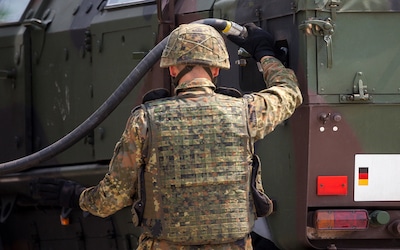Military Storage Buildings – 4 Tips for Safe Fuel and Oil Storage

Fuel and oil supplies are critical for mission preparedness in all branches of the military. Every base requires its military equipment to be fully supplied and ready to deploy at any time. On tight, efficient bases, storage space is often limited. Many military facilities combine operational and storage needs in single-use buildings. This poses potential safety risks when these buildings fail to meet flammable liquid storage compliance requirements.
Follow these four tips to maintain high safety standards and military preparedness when dealing with flammable liquids on base.
1. Know Your Flammable Liquid Storage Requirements
OSHA 1910.106 and NFPA 30 provide guidelines for storing flammable liquids. NFPA 68 or 69 regulates dispensing flammables if mixing or dispensing is required inside the building. Contrary to common use, intermodal containers (also known as ISO containers or Conex boxes) do not meet flammable liquid storage requirements. Shipping containers do not have internal containment sumps or a non-combustible construction. Inspections of the container’s base is also impossible due to how they sit on the ground. They are strongly discouraged from being used for this function.RELATED ARTICLE: Oil and Flammable Liquid Storage
2. Separate Military Operations & Troops from Flammable Storage
Keeping stocks of fuel and oils inside hangars with aircraft is not a safe practice and does not meet OSHA and NFPA flammable liquid storage requirements. Ensure the safety of personnel and valuable military equipment by keeping fuel supplies out of operational areas such as hangars. Military equipment is to be kept in a TEMF (Tactical Equipment Maintenance Facility); and petroleum, oil, and lubes in a POL (Petroleum, Oil and Lubricants storage facility). US Chemical makes buildings to meet these military standards.3. Fire-rated Storage Solutions
Our chemical storage buildings comply with all state and local flammable liquid storage requirements and codes. NFPA requires different levels of fire rating depending on the storage building’s location in relation to an occupied building. Many safety features are available for our chemical storage buildings. Some of these include:- Fire suppression systems automatically extinguish fires and automatically close fire dampers and shutdown ventilation systems
- Remote alarms and monitoring systems immediately alert you of any problems
- The secondary containment sump captures spills and leaks inside the building
RELATED ARTICLE: The Importance of Spill Containment Sumps in Chemical Storage Buildings
